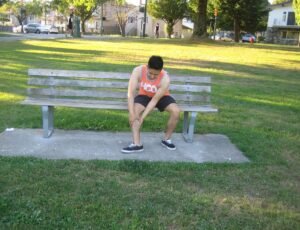Shin splint is the term typically used to describe pain that is felt on the interior edge of the shinbone. It is concentrated in the lower beg in between the ankle and knee. The condition typically affects individuals who engage in moderate to heavy physical activity. Those who engage in sports such as soccer, basketball and tennis are likely to develop the condition. The continuous stress on the muscles, bones and joints in the lower legs prevents the body from repairing itself naturally.
Causes of shin splints
The pain linked with a shin splint is due to excessive force on the shinbone as well as the tissues that connect to the surrounding muscles. The muscles swell and the pressure against the bone results to inflammation and pain.
Shin splints can also be due to stress reactions to bone fractures. The regular pounding leads to the formation of small-sized cracks in the bones. Your body can repair these cracks if it is given time to rest. Nevertheless, if the body could not rest, these small cracks can develop into a complete fracture or stress fracture.
Other causes include:
- Muscular weakness in the buttocks or thighs
- Abnormalities in the anatomy
- Lack of flexibility
- Incorrect training techniques
Shin splints can also occur once the leg muscles and tendons are tired. Individuals with rigid arches or flat feet are at high risk for developing the condition.
Symptoms of shin splints

- Dull ache in the front part of the lower leg
- Constant pain that is constant and develops when exercising
- Pain is present on either side of the shinbone and the interior part of the lower leg
- Muscular pain
- Swelling in the lower leg
- Soreness on the inner part of the lower leg
- Weakness and numbness in the feet
Diagnosing shin splints
The doctor could not diagnose the condition during a physical examination. Questions will be asked regarding physical activities and how often they are performed. Imaging tests such as an X-ray can be requested if the doctor suspects bone fractures and other conditions.
How to treat shin splints
Shin splints typically require a break from physical activities and allowing the legs to rest. Any discomfort can resolve entirely in just a few hours or a few days with limited activity and rest. It is recommended to rest at least two weeks. At this time, you can engage in less strenuous activities such as walking or swimming. Additionally, the following first aid measures can be provided:
- Application of ice to minimize the swelling
- Elevate the affected legs
- Administer over-the-counter medications for pain
- Provide elastic compression bandages
When is medical care needed?
It is important to consult your doctor if the shin splints are not responding to the common treatment methods or if the individual is suffering from the following symptoms:
- The shin feels hot
- Severe pain in the shin after an accident or fall
- Pain in the shin even if resting
- Shin is inflamed visibly
- Swelling in the shin area the worsens
